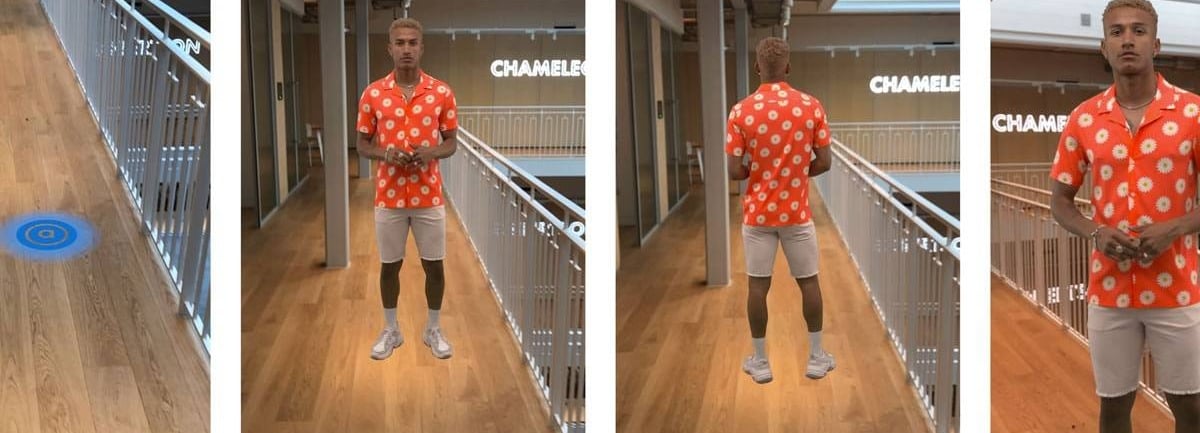Augmented Reality Ads And The Power It Holds Within
It’s safe to say that augmented reality (AR) technology has been a powerhouse for almost a decade now. Big-name companies like Facebook, Apple and Google have introduced their technology to augmented reality, and more people are discovering its endless possibilities. As of 2021, over 1 billion people worldwide are using AR-powered mobile apps and their features. And the global market share of AR is only expected to grow in the upcoming years.
Although AR ads are relatively new in the digital marketing landscape, they proved their value to the advertisers who accepted the challenge of implementing them into their marketing campaigns.
The early stages of augmented reality ads
The roots of AR advertising date back to 2008. German agencies in Munich designed a printed magazine ad for a model BMW Mini, which, when held in front of a computer’s web camera, also appeared on the screen. Because the virtual model was connected to markers on the physical ad, the user could control the car on the screen and move it around to view different angles.
A few years later, other companies saw the potential in interactive advertising where users could interact with it. In 2011, National Geographic put up screens and cameras in the mall and invited people to play with extinct animals. Coca-Cola took a step further and, in 2013, created an interactive ad campaign simulating environmental problems such as ice melting right in the shopping mall.
The concept of AR ads was clear - they directly engaged with the consumers actively at home and in public places. Although early efforts required quite an investment, they paid off in the giant media coverage and consumers’ interest in the brand.
The virtual try-on
Back in 2017, Apple introduced ARKit for developers to get creative with their apps and implement the surging technology of augmented reality. Social media apps like Snapchat, Facebook or Instagram presented the user’s AR-powered features such as filters, backgrounds and interactive games, which do not require any specific gear, only the mobile phone’s camera. Brands shortly after the introduction saw the potential the AR is holding and started adding it to their marketing products mix.
In 2019, clothing online shop ASOS introduced “Virtual Catwalk”, allowing users to put the models with the curated outfits to project through the mobile phone’s camera right in their living room and get a complete 360° view of how the clothing pieces look live. The popular online shop also rolled out the “See My Fit” feature, which uses the power of AR and scales the clothing on the different size models and shares it with friends and family through social media platforms. The implementation of augmented reality helped ASOS to generate 24% more revenue compared to previous years.
Beauty brand L’oreal introduced its signature makeup looks filters on Instagram. Users can virtually try on and, if they like it, purchase the makeup items directly through the Instagram shopping feature. The virtual try-on experience resonated with the consumers and L’oreal saw triple conversion rates after the launch of the AR filters.
The AR holds endless possibilities for brands to interact with the consumers in a brand new way. Facebook has recently rolled out an ability for advertising campaigns to incorporate augmented reality. For example, advertisers can launch an interactive ad: when users click the ad, they can project the product in their space through the mobile camera.
Do users want more advertising?
A recent survey from Ericsson’s company Emodo found that nearly three-quarters of consumers would be more likely to pay attention to an ad incorporating augmented reality elements. About 70% said that they would like to see more ads with AR features in the future.
“I’ve been in advertising a long time and I’ve never heard of 70% of people asking for more ads of any kind in any context”, said Jake Moskowitz, VP of data strategy and head of the Emodo Institute at Ericsson.
AR ads can span the purchase funnel from brand awareness campaigns to try-before-you-buy steps. These ads run across social platforms like Facebook, Instagram, TikTok and Snapchat, but can also appear in various formats such as Google Swirl, allowing the consumers to interact with products in 3D.
Bottom line
The future never looked brighter for augmented reality ads. BusinessWire reports the AR market will have a value of over $60 billion in 2023. A significant increase from $11 billion in 2018. With the growing competition in the digital landscape, brands are set to search for new ways to engage with their potential customers, and AR seems like a hit you would not want to miss.
Implementing augmented reality ads is highly engaging and can cut the customer journey straight to the sale phase with a shortened consideration time.




